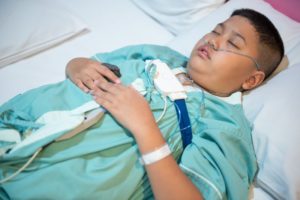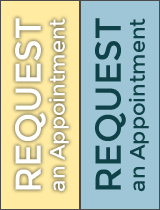How to Spot Sleep Apnea in Children – Your Dentist Provides Tips
May 21, 2018
 Sleep apnea is a disorder that affects an estimated 22 million Americans and roughly three to 12 percent of children. That means that if your child snores, you may be worried about whether he or she has this condition. As you continue reading, though, your local dentist will provide the symptoms of sleep apnea in children to look for.
Sleep apnea is a disorder that affects an estimated 22 million Americans and roughly three to 12 percent of children. That means that if your child snores, you may be worried about whether he or she has this condition. As you continue reading, though, your local dentist will provide the symptoms of sleep apnea in children to look for.
What is Sleep Apnea?
Sleep apnea involves momentary lapses in breathing that happen repeatedly throughout the night due to various reasons. The cessation of breath causes the brain to send panic signals through the nervous system that awaken the person, and the lack of rest that results can lead to hypertension, heart problems and other issues.
What are the Different Types of Sleep Apnea?
The two main types of sleep apnea are central sleep apnea (CSA) and obstructive sleep apnea (OSA). The following shows how they differ:
- CSA – This is the rarest type of sleep apnea and involves the brain failing to send the body the proper signal to breathe. It’s important to get help for this kind of sleep disorder, immediately, because the consequences could be dire.
- OSA – The more common type of sleep apnea is OSA. It’s the result of the muscles in the throat collapsing, making it harder for oxygen to flow during sleep. Children with a sleep disorder are more likely to have this kind of apnea.
Thankfully, both disorders are treatable, but it’s important to know how to identify the symptoms:
- Snoring – Approximately 10% of children who snore have sleep apnea
- Mouth breathing – Children with enlarged adenoids (glands in the roof of the mouth) tend to breathe with their mouths open.
- Breathing pauses during sleep – If the pauses in breath happen in repeated cycles, it’s a strong sign of sleep apnea and needs to be addressed.
- Daytime sleepiness – Does your little one always seem to be tired, even though he or she should have received an adequate amount of sleep?
- Difficulty with concentration – If your child is not getting the necessary rest, then he or she may show some definite signs of struggling with focusing his or her mind.
- Behavioral issues – What tends to go hand-in-hand with decreased focus are behavioral issues.
- Poor performance at school – Finally, lack of concentration and behavior problems can naturally lead to poor performances at school.
My Child May Need Sleep Apnea Treatment – What Should I Do?
If you’ve read the many symptoms above and suspect that your little one has some type of sleep apnea, you should contact your local expert to setup an at-home sleep study. Using monitors to capture data about how your child sleeps, your dentist will evaluate the results and determine whether sleep apnea is the problem.
To learn more about the process, reach out to your dentist today.
About the Author
Since graduating from Baylor College of Dentistry in 1998, Dr. Deborah A. Romack has immersed herself into the world of sleep disorder treatment. One of her goals is to help everyone get a great night’s sleep because she understands how important it is to your overall health. Dr. Romack practices at Weatherford Dental Sleep Medicine and can be reached for more information through her website.
No Comments
No comments yet.
RSS feed for comments on this post.
Sorry, the comment form is closed at this time.

